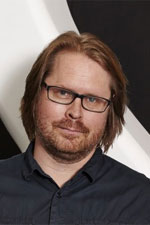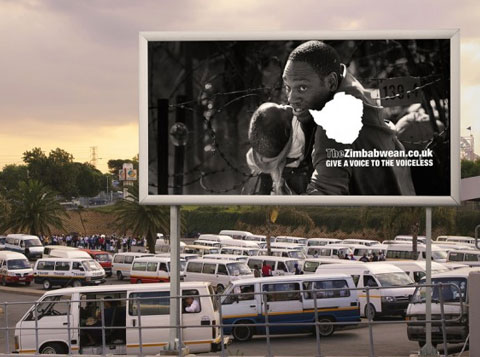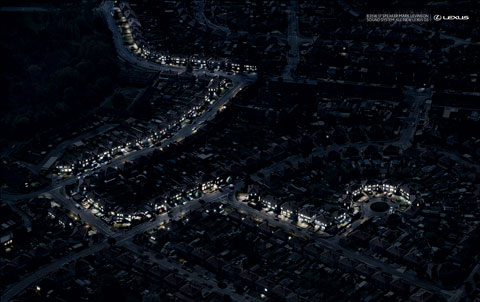
A native Australian with an international sensibility, Damon has worked on global brands such as Heineken, Visa, BMW, and the most successful World Cup campaign in history. Actually, we here at the Art Directors Club are not entirely convinced he isn't some kind of award-winning robot - he seems to have the golden touch.
So what is the King Midas of advertising looking forward to as a judge for the ADC 93rd Annual Awards of Art + Craft in Advertising and Design this coming March - other than the trip to Costa Rica?
ADC: How does it feel to be judging the awards ceremony that gave you its first ever Black Cube for Best in Show [for The Trillion Dollar Campaign]?
Damon: I'm just really proud to be asked. There are certain shows for me that have a real specialness, and this is definitely one. I think the great thing about ADC has always been its desire for craft. At its very core, the craft is what it's been about. It's been here since 1920. It's older, sure. But it's always had that integrity where it's not just about the ideas, but how well the ideas are made. In a strange way it's an old idea that's become incredibly relevant today: it's not just about having ideas, it's about making ideas. I think the judging is going to be really interesting, and I'm really looking forward to it.

ADC: What does this year's work have to have in order to win an award instead of an honourable mention?
Damon: I think that on a simplistic level, good work either has craft, or it has an idea. Great work has both. It needs to be at the level where you can't really poke any holes in the craft, and you can't really poke any holes in the idea. Then it kind of comes down to two or three entries, and it's normally just one that has something...extra. I think the real trick these days is everything is direct response. So, it's really about how these elements connect now. If you go back to 2010 with Jay Z's Decoded or if you look at Nike Fuel Band, if you look at the individual elements there not always that impressive; what's often impressive is how they work together. If you ask me what a modern campaign is, I think it's often how the elements work together that separates it from the average.
ADC: Saatchi & Saatchi has doubled in size since you came in two years ago to give the place a bit of an overhaul. How has the environment changed since then and how will you sustain the growth?
Damon: When I was at TBWA\Hunt\Lascaris, it was a pretty well-oiled machine. When I came to Saatchi & Saatchi, it was quite small, and it had been through some tough times. We've managed to put a lot in place in the last years that I think will start to see results of in the next 12 months. You can't take any shortcuts with an agency. But for me the most important part of an agency is its spirit and the energy. I actually like to keep people in the agency for a fair period of time. If you look at the really great agencies around the world, you'll often see that the creative department has a core that's pretty settled. I think that builds gravity, and I think great agencies have gravity, and they hold people there. I think Saatchi's just starting to move in that direction now. There's some really good people working here now, and I think we're starting to share the same vision, which is step one.

ADC: So much of your work has been fundamentally about connecting people. Now that these connected people have the ability to spread your message at their own speed and on their own terms, how do you maintain the level of craft with an idea that is travelling the globe without your supervision?
Damon: Craft is often about what you start with. You can't control the conversation. You can start the conversation, and then you can be as responsive as possible. I think if I look at the work that I've always tried to do, the content for me is about what I start with. I think what's changed is how quickly you can respond and build on what you're doing. I think you've got to be able to do both of those things at the same time. I think some campaigns do better than others do just because it's a very difficult thing to get it right. You also need a lot more people these days to do an integrated campaign.
ADC: Do we have to reconsider our current measurements of success then?
Damon: My measurement for success is just..."do I like it?"! It's a really hard question to say what is success because every campaign might have a different measurement. I will look at the results. But where I look first and foremost is, "Holy shit, have I ever seen that before?" and "did that blow my mind?" If you can get through that test, then I'll look at all the other measurements and stuff. But I think you know when something's great. The funny thing about judging is it's a bit like being a consumer. If you look at 3,000 pieces in a day, you're actually looking at work the way a consumer looks at work. You look at it very quickly. I think later on maybe you analyse it a bit more. But initially you just get an impression. In some ways I think becoming a finalist is sometimes the hardest thing of all because there's so much work to go through. But just to get to finalist level and have made that impression on a judge is quite an achievement.